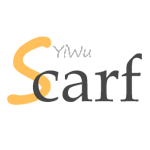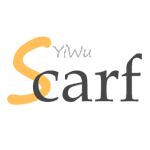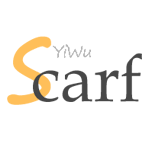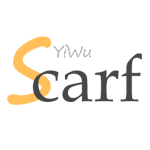Add:China Rocawear Clothing Co., Ltd.
1030,Building 5,Wanda Plaza,Yiwu City,Zhejiang,China
Wholesale Custom Silk Scarf Printing Factory






Digital Scarf Design and Production Process
Introduction
Digital textile printing has revolutionized the fashion and accessories industry, particularly in the production of scarves. This innovative technology allows for unparalleled design flexibility, rapid prototyping, and cost-effective short runs compared to traditional textile printing methods. The process of creating digitally printed scarves encompasses several meticulous stages from initial concept to final product. This article provides a comprehensive examination of the entire workflow-covering design creation, pre-press preparation, digital printing techniques, post-printing treatments, quality control measures, and final production processes. Whether for fashion designers, textile manufacturers, or entrepreneurs entering the scarf market, understanding this complete digital workflow is essential for producing high-quality, market-competitive printed scarves.
1. Design Conceptualization and Creation
The scarf production journey begins with creative design development tailored specifically for digital textile printing. Designers draw inspiration from various sources including current fashion trends, cultural motifs, nature, or artistic movements. Unlike traditional screen printing, digital methods impose virtually no limitations on color count or design complexity, enabling intricate patterns with photorealistic detail and subtle gradients.
Professional designers typically use Adobe Photoshop and Illustrator as primary tools, though specialized textile design software like NedGraphics or AVA CAD/CAM offers additional functionality for repeat patterns. Key considerations at this stage include:
- Color Selection: Building palettes with Pantone TPX colors or lab dip approvals for accurate color reproduction
- Pattern Repeat: Engineering seamless repeats for all-over prints or creating placement prints with focal motifs
- Scale and Proportion: Adjusting design elements to flatter scarf dimensions (common sizes being 140x140cm or 180x35cm)
- Fabric Considerations: Accounting for how different materials will absorb dyes and affect final appearance
Many designers create collections with coordinating patterns that share color stories but vary in scale or motif arrangement. Contemporary scarf designs often incorporate optical illusions, geometric precision, or digital artwork that would be impossible to produce economically with analog methods.
2. Digital File Preparation and Color Management
Transitioning from design concept to printable file requires meticulous pre-press preparation. The design file must be optimized for the specific digital printing system and fabric type being used. This stage typically involves:
File Setup:
- Converting to appropriate color modes (typically CMYK or expanded gamut configurations)
- Setting exact document dimensions including bleed areas
- Confirming resolution (150-300 dpi at actual print size)
- Embedding color profiles (commonly ICC profiles specific to printer/ink/fabric combinations)
Color Separation and Proofing:
Digital printers use specialized RIP (Raster Image Processor) software to translate design files into printer-readable data. Advanced color management systems ensure accurate reproduction by:
- Calibrating printers with spectrophotometers
- Creating custom ink limitation profiles to prevent over-saturation
- Generating soft proofs and physical strike-offs for approval
Pattern Engineering:
For all-over prints, technicians perfect the pattern repeat using specialized textile software that accounts for:
- Straight or half-drop repeats
- Pattern matching at seams
- Design element distribution across the fabric width
This stage often includes creating a "cuttable repeat" where the pattern remains balanced regardless of where the scarf is cut from the fabric roll.
3. Fabric Selection and Pretreatment
The choice of base material significantly impacts the final product's appearance, hand feel, and durability. Common scarf fabrics for digital printing include:
- Silk (charmeuse, crepe de chine, twill) - Luxurious hand and vibrant color uptake
- Polyester - Cost-effective with excellent color brilliance
- Viscose/Rayon - Drapey alternative to silk
- Cotton - Natural fiber popular for casual scarves
- Blends - Combining fiber properties (e.g., silk-cotton, polyester-viscose)
Prior to printing, fabrics undergo crucial pretreatment:
Preparation Processes:
- Washing to remove sizing and impurities
- Applying chemical primers (for pigment inks) or pre-coatings (for reactive/sublimation dyes)
- Heat setting synthetic fabrics to prevent shrinkage
- Lining up grain and ensuring wrinkle-free feeding into printers
Pretreatment chemistry varies by ink system:
- Reactive Dyes: Require alkali and urea pretreatment for natural fibers
- Acid Dyes: Need acid donors for protein fibers like silk
- Disperse Dyes: Utilize heat transfer for synthetics
- Pigments: Bond via binder systems to fabric surfaces
Proper pretreatment ensures optimal ink fixation, color vibrancy, and wash fastness in the final product.
4. Digital Printing Technologies and Processes
Contemporary scarf production employs several digital printing technologies, each with distinct advantages:
Inkjet Printing Systems:
- Reactive Dye Inkjet: For natural fibers (cotton, silk, linen) offering excellent wash fastness
- Acid Dye Inkjet: Specifically for protein fibers like silk and wool
- Disperse Dye Sublimation: For polyester fabrics, where dyes gasify and penetrate fibers
- Pigment Inkjet: Universal application across fiber types with simpler fixation
Printing Process Steps:
1. Loading: Fabric mounted on printer roll-to-roll system or flatbed
2. Alignment: Ensuring straight grain and proper tension
3. Printing: Precision inkjet heads deposit microscopic droplets (typically 4-12 colors)
4. Drying: Immediate infrared or hot air drying between color passes
5. Inspection: On-the-fly monitoring for defects or banding
Advanced printers like the MS JP6 or Reggiani Dream operate at speeds up to 150 linear meters/hour with resolutions reaching 1200 dpi. Many systems incorporate:
- Automatic cleaning cycles
- Nozzle health monitoring
- Variable droplet technology for smooth gradients
5. Post-Printing Treatments and Fixation
Printed fabrics require additional processing to make designs permanent and wearable:
Steaming (for reactive/acid dyes):
- Saturated steam at 100-102Celsius for 8-30 minutes
- Allows dyes to chemically bond with fibers
- Specialized steamers ensure even penetration
Washing:
- Multiple bath sequences remove unfixed dye and chemicals
- Typical stages: cold rinse, hot wash, soaping, final rinse
- Water recycling systems minimize environmental impact
Heat Setting (for disperse/sublimation):
- Transfer calendars apply 190-210Celsius heat
- Causes dyes to transition from solid to gas state
- Permanent dye penetration into synthetic fibers
Pigment Fixation:
- Curing at 150-170Celsius to polymerize binders
- May include additional softener applications
Finishing Processes:
- Calendaring for sheen
- Sanforizing to control shrinkage
- Applying functional finishes (water repellent, UV protection)
6. Quality Control and Inspection
Stringent quality checks ensure only flawless scarves reach customers:
Color Accuracy:
- Spectrophotometer verification against standards
- ΔE measurements below 1.5 for critical colors
- Consistency across production runs
Print Quality:
- Magnified inspection for banding, nozzle streaks
- Registration accuracy (especially for multicolor designs)
- Edge definition and sharpness
Fabric Integrity:
- Tensile strength testing
- Pilling resistance evaluation
- Dimensional stability verification
Wash and Rub Fastness:
- ISO 105-C06 wash testing
- Crockmeter rub tests
- Lightfastness evaluation
Automated inspection systems like those from Elbit Vision scan for defects at 30+ meters/minute, while manual inspection tables provide detailed spot checks.
7. Cutting and Hemming Techniques
Transforming printed fabric into finished scarves involves precision cutting and edge finishing:
Cutting Methods:
- Manual Cutting: Skilled workers using templates for luxury scarves
- Automated Cutting: CNC laser or blade cutters for production efficiency
- Ultrasonic Cutting: Seals edges while cutting synthetic fabrics
Hemming Options:
- Rolled Hem: Classic narrow hem, often hand-stitched on silk
- Overlock Stitch: Secure finish for stretch fabrics
- *Laser-Fused Edge: High-tech seal for synthetic materials
- Fringe: Unraveled edges or added tassels
Premium manufacturers employ specialized hemming machines like the Merrow or Union Special that create nearly invisible seams. For square scarves, perfect 90-degree corners are essential.
8. Final Finishing and Packaging
The last steps ensure scarves meet luxury standards:
Final Pressing:
- Steam pressing to remove wrinkles
- Shape setting for perfect drape
- Specialized buck presses for delicate silks
Labeling:
- Attaching content/care labels
- Branding elements (woven labels, hangtags)
- Sustainability certifications (OEKO-TEX, GOTS)
Packaging:
- Tissue wrapping to prevent creasing
- Signature boxes or reusable pouches
- Barcoding for inventory control
- Gift-ready presentation options
High-end brands often include:
- Numbered certificates of authenticity
- Story cards about design inspiration
- Care instruction booklets
9. Sustainable and Innovative Practices
Modern digital scarf production increasingly incorporates eco-conscious methods:
Water Conservation:
- Ink systems reducing water usage by 95% vs traditional printing
- Closed-loop water recycling in post-treatment
Material Innovations:
- Organic and recycled fiber bases
- Bio-based dye alternatives
- Compostable packaging
Energy Efficiency:
- LED curing systems
- Heat recovery in drying processes
- Solar-powered production facilities
Circular Economy:
- Take-back programs for recycling
- Digital inventory reducing overproduction
- On-demand manufacturing models
Cutting-edge developments include:
- 3D texture printing
- Thermochromic ink applications
- NFC-embedded smart scarves
- AI-assisted design customization
Conclusion
Digital printing has transformed scarf manufacturing by enabling unprecedented design freedom, rapid turnaround, and environmentally preferable production compared to conventional methods. From initial artwork creation through final quality inspections, each stage requires specialized knowledge and precision execution to produce luxury-caliber scarves. As technology advances, digital printing continues to expand possibilities for customization, sustainability, and innovative textile applications-ensuring its growing dominance in the global scarf market. Manufacturers embracing these digital workflows can respond agilely to fashion trends while maintaining high standards of quality and responsibility. The future of scarf production lies in further integration of digital technologies throughout the supply chain, from design conception to finished product delivery.









